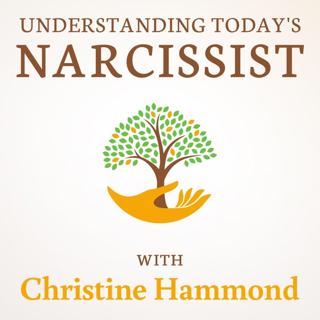
E05: Covert Narcissists
What is a covert narcissist? And how do they differ from other types of narcissists? Discover the answer in this episode. For more information, visit www.growwithchristine.com Advertising Inquiries: https://redcircle.com/brands Privacy & Opt-Out: https://redcircle.com/privacy
8 Kesä 201714min

E04: What's In A Name?
Discover the different personality disorders and how they are different and similar to narcissistic personality disorder. To learn more, visit www.growwithchristine.com Advertising Inquiries: https://redcircle.com/brands Privacy & Opt-Out: https://redcircle.com/privacy
7 Kesä 201715min

E03: Narcissistic Mothers and Their Daughters
Narcissistic mothers are often portrayed in popular culture and Disney movies. Discover the hallmark traits of narcissistic mothers and their daughters, and a case study that illustrates the dynamic between them. For more information, visit www.growwithchristine.com Advertising Inquiries: https://redcircle.com/brands Privacy & Opt-Out: https://redcircle.com/privacy
25 Helmi 201713min

E02: Narcissistic Cycle of Abuse
In this episode, you'll discover the narcissist cycle of abuse; what it is and how to deal with it effectively. Learn how to avoid verbal assaults and how the narcissist uses the cycle of abuse for their own benefit. To learn more, visit www.growwithchristine.com Advertising Inquiries: https://redcircle.com/brands Privacy & Opt-Out: https://redcircle.com/privacy
25 Helmi 201713min

E01: What Is Narcissism?
Narcissism is not going away- we see in our political environment and in society in general. In this episode you'll discover what narcissism is, the origin of the term narcissism and what motivates a narcissist. For more information, visit www.growwithchristine.com Advertising Inquiries: https://redcircle.com/brands Privacy & Opt-Out: https://redcircle.com/privacy
25 Helmi 201711min





















